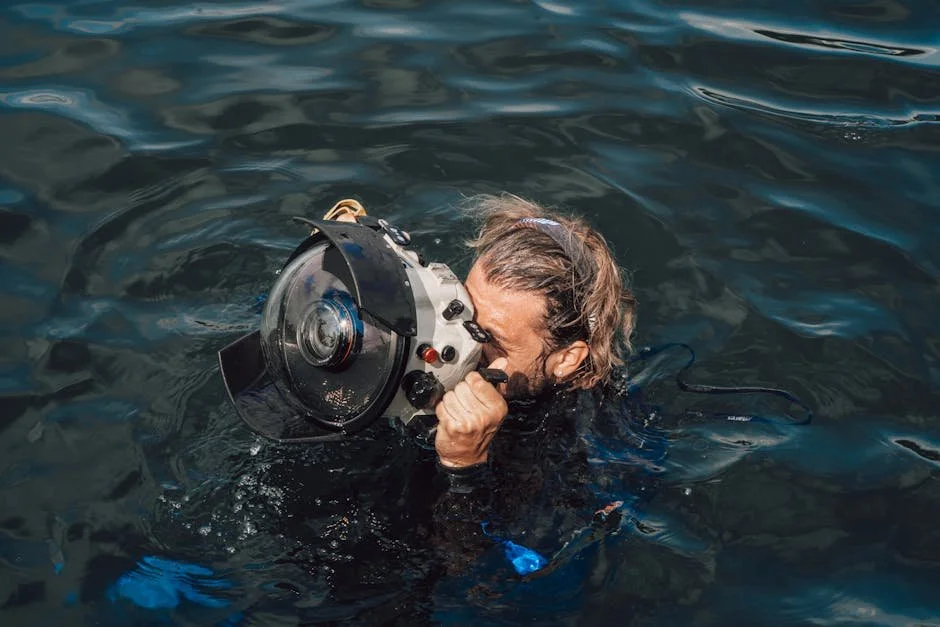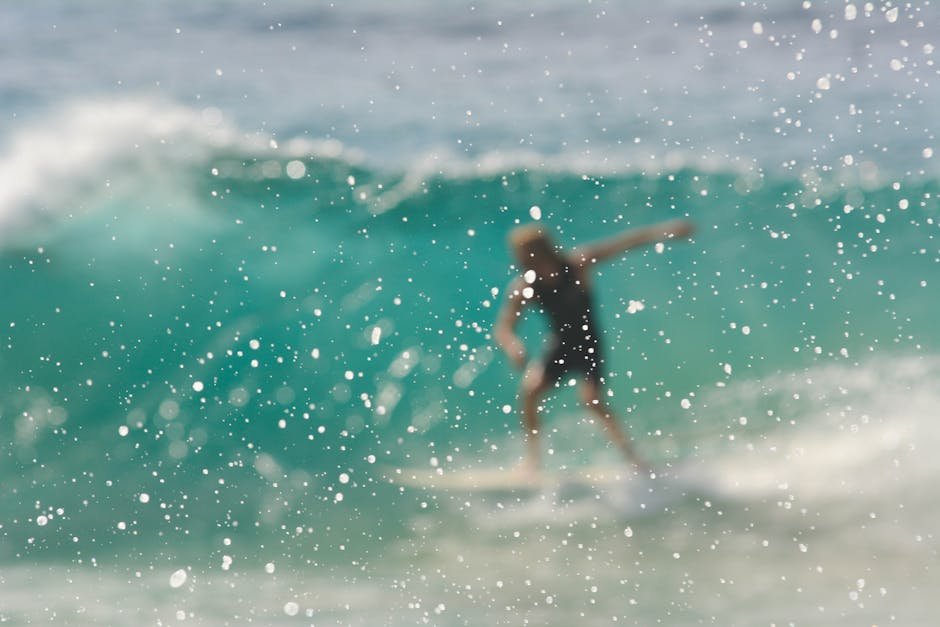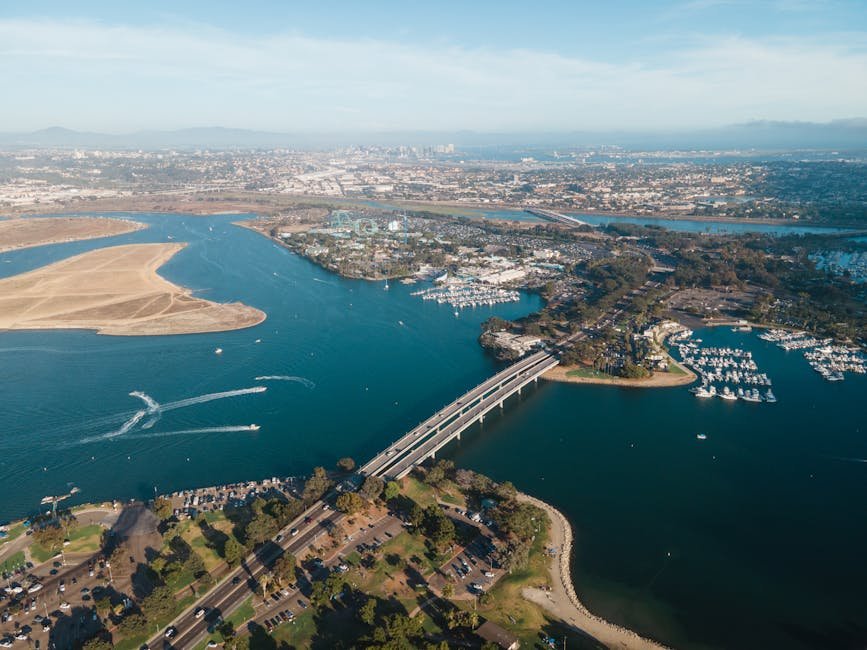Introduction to Marine Photography and Its Importance
Marine photography is more than just taking pictures underwater; it's a powerful tool for telling the ocean's story. This type of photography shows us the beauty beneath the waves, which many of us wouldn't see otherwise. But it's not just about beauty. Marine photography plays a crucial role in conservation efforts. By capturing the vibrant life and the challenges underwater environments face, photographers can inspire people to care about and protect our oceans. Think of it as giving the ocean a voice, showing the world what we stand to lose if we don't act to preserve it. Through their lenses, marine photographers highlight issues like coral bleaching, pollution, and the impact of climate change on marine life. Their work encourages environmental action and fosters a deeper connection between people and the ocean. In a way, marine photography is a bridge between the aquatic world and us, making it an essential endeavor for those passionate about preserving ocean beauty and its inhabitants.
Capturing the Ocean's Majesty: Techniques in Marine Photography
Capturing the vast, stunning beauty of the ocean requires more than just a click of the camera. You have to dive deep—sometimes literally—into the techniques that make marine photography not just possible, but spectacular. First off, lighting underwater is a whole different ball game. The deeper you go, the more colors fade. Red disappears first, followed by orange, and then yellow. To combat this, seasoned photographers use external flash units or strobes to bring colors to life. It's not just about lighting though, understanding the water's movement and how marine life behaves is crucial. Patience is key. Sometimes, you have to wait for that perfect moment when a curious turtle swims by or a school of fish forms a mesmerizing pattern. Composition matters too. With the unpredictable nature of water, framing the right shot takes a mix of preparation and spontaneity. Wide-angle lenses are your best friend for capturing the vastness of the sea and its inhabitants, while macro lenses are perfect for honing in on the tiniest sea creatures. And let’s not forget about the importance of safety and respect for the ocean's inhabitants. Successful marine photographers know their limits, always prioritize the well-being of marine life over getting the shot, and are advocates for preserving the beauty they aim to capture. So, whether you’re hovering near the surface or exploring deeper territories, remember, marine photography is more than just capturing images; it’s about conveying the ocean’s majesty and advocating for its preservation.
Marine Photography as a Tool for Environmental Awareness
Marine photography does more than dazzle us with the mysteries beneath waves; it shines a spotlight on the unseen, urging us to protect what we're in danger of losing. Each stunning snapshot is a call to action. Through the lens, photographers reveal the impacts of pollution, climate change, and overfishing on our oceans. These vibrant images capture everything from the fragile beauty of coral reefs to the intimate lives of marine creatures, showing not just what exists but what's at stake. It's visual storytelling that makes distant problems personal. By sharing these images, we're not just admiring the ocean's wonders; we're reminded of our responsibility to preserve them. Marine photography, therefore, is a potent ally in the fight for environmental conservation. It educates, it inspires, and most importantly, it pushes us to act before it's too late.
Understanding the Impact of Human Activities on Marine Ecosystems
Human activities have a significant impact on marine ecosystems, often harming the delicate balance of life under the sea. From pollution to overfishing, our actions put immense pressure on ocean habitats and the species that call them home. Pollution, one of the biggest threats, comes in many forms, including plastic waste which endangers marine life through ingestion and entanglement. Furthermore, chemicals and pollutants from industries find their way to the ocean, affecting the water quality and health of marine species. Overfishing depletes fish populations faster than they can reproduce, disrupting food chains and leading to the decline of entire ecosystems. Coastal developments destroy crucial habitats like mangroves and coral reefs, which serve as nurseries and shelter for many marine creatures. Climate change, driven by human activity, increases ocean temperatures and causes acidification, further endangering marine life and ecosystems. By understanding these impacts, we can take steps to mitigate our footprint and protect the ocean's beauty for future generations.
The Role of Marine Photography in Conservation Efforts
Marine photography does more than just capture the ocean's beauty; it's a powerful tool in conservation efforts. By sharing images of underwater life and habitats, photographers shine a light on what's at risk. Seeing the vibrant colors of coral reefs or the intricate behaviors of marine animals sparks a connection. It turns the hidden mysteries of the ocean into something personal. People care more about what they understand and feel connected to. This is where marine photography makes a big difference. It doesn't just show the problems, like pollution or overfishing, but also celebrates the ocean's wonders. This dual role helps inspire action. Whether it's through an online share, a gallery exhibition, or a photo in a magazine, these images have the power to mobilize change. They encourage people to reduce plastic use, support marine protected areas, or even join conservation projects. In essence, every photo has the potential to be a call to action.
Challenges Faced by Marine Photographers
Marine photographers dive deep, literally and metaphorically, to capture the unseen beauty of the ocean. Yet, it's no easy task. First, light behaves differently underwater. Colors like red and orange disappear first, leaving photos with a blue or green tint unless corrected or special lighting is used. Then, there's the water itself – always moving, which can blur images if not managed correctly. Another big hurdle? Wildlife doesn't pose. Photographers need patience and luck to get that perfect shot. Plus, the deep sea is not a friendly place for equipment. Saltwater corrodes, pressure increases, and the risk of damaging expensive gear is always present. Finally, accessing underwater sites often requires skill in scuba diving, adhering to safety and environmental regulations to protect the fragile ecosystems they aim to photograph. Despite these challenges, marine photographers are driven by a passion to reveal the ocean's mysteries and advocate for its preservation.
Highlighting Success Stories: Positive Outcomes from Marine Photography
Marine photography does more than just capture the breathtaking beauty of the ocean. It can be a powerful tool for change. For instance, imagery from beneath the waves has been pivotal in sparking global movements towards ocean conservation. Let's look at a few success stories. The documentary "Chasing Coral" utilized stunning underwater photography to showcase the devastating impact of coral bleaching. Its widespread viewing has increased public awareness and pushed for policies protecting coral reefs. Similarly, photographers like Brian Skerry have brought the intimate lives of sea creatures into the public eye, leading to a surge in empathy and a willingness to protect these underwater inhabitants. Their work fuels conservation efforts, proving that a picture is indeed worth a thousand words when it comes to saving our oceans. By highlighting the beauty that exists below the surface, marine photography inspires action, ensuring these environments receive the protection and appreciation they deserve.
How to Get Started with Marine Photography
Diving into marine photography begins with gear and knowledge. First, grab a waterproof camera. It doesn't have to break the bank. Start with something simple that can handle underwater pressure. Next, learn the basics of photography - like framing and lighting. Water alters light, so understanding how to work with or against this can make or break your shot. Study marine life behavior too; knowing when certain creatures are most active can help you capture the best moments. Practice in shallow waters before diving deep. This approach gives you confidence and helps refine your skills. Remember, respect the ocean. Don’t disturb marine life or their habitats. Marine photography isn’t just about taking stunning pictures; it’s about celebrating and protecting ocean beauty.
Ethical Considerations in Marine Photography
When snapping shots beneath the waves, it's not just about capturing the beauty. Ethical marine photography plays a vital role in preserving ocean life. Always prioritize the well-being of marine creatures over getting the perfect shot. This means keeping a safe distance to avoid stressing or harming them. Remember, the flash from your camera can disorient smaller fish and other sea life, so use natural light whenever possible. Never touch, chase, or feed the wildlife. These actions can alter their natural behaviors and potentially harm their health. Also, be mindful of the underwater environment. Avoid stirring up the seabed or touching the coral, as these actions can damage fragile ecosystems. By practicing responsible marine photography, you contribute to the conservation of ocean beauty for future generations to appreciate.
Conclusion: The Future of Marine Photography in Preserving Ocean Beauty
The future of marine photography holds a promise that goes beyond just capturing beautiful underwater scenes. It has the power to change perspectives, drive conservation efforts, and preserve the beauty of the oceans for future generations. As technology advances, photographers are equipped with more robust and environmentally friendly equipment, allowing them to dive deeper and minimize their ecological footprint. However, the true impact lies in the shared responsibility among photographers, viewers, and policymakers. By showcasing the unseen wonders and the challenges oceans face, marine photography acts as a catalyst for change. It encourages a global dialogue on marine conservation, influencing policies and inspiring individuals to take action. The collective ambition should be not only to admire the beauty of the ocean through a lens but also to ensure that this beauty is sustained and protected. Marine photography, therefore, is not just an art; it's a mission, where every snapshot can contribute to a larger story of hope and preservation.





































